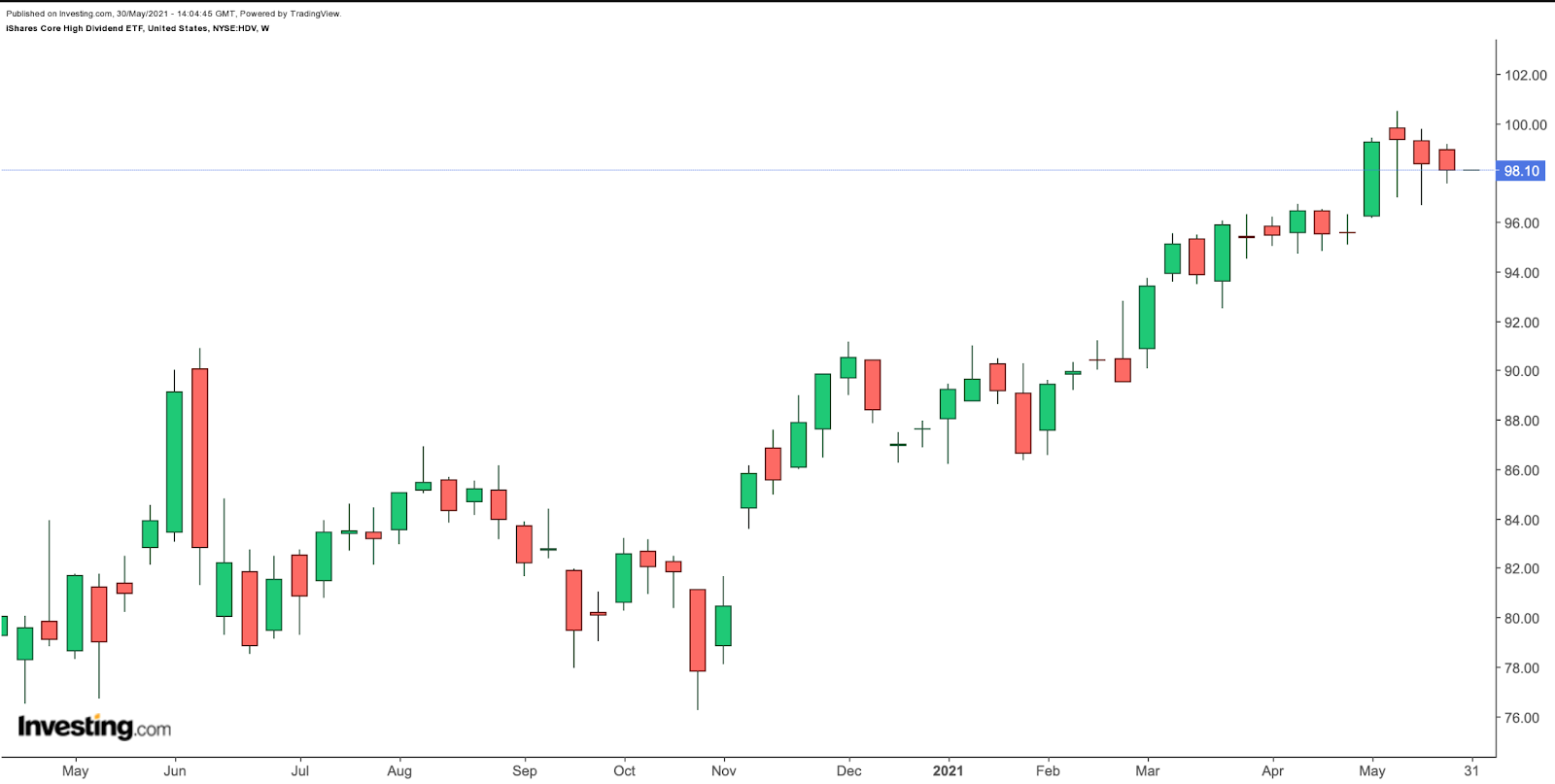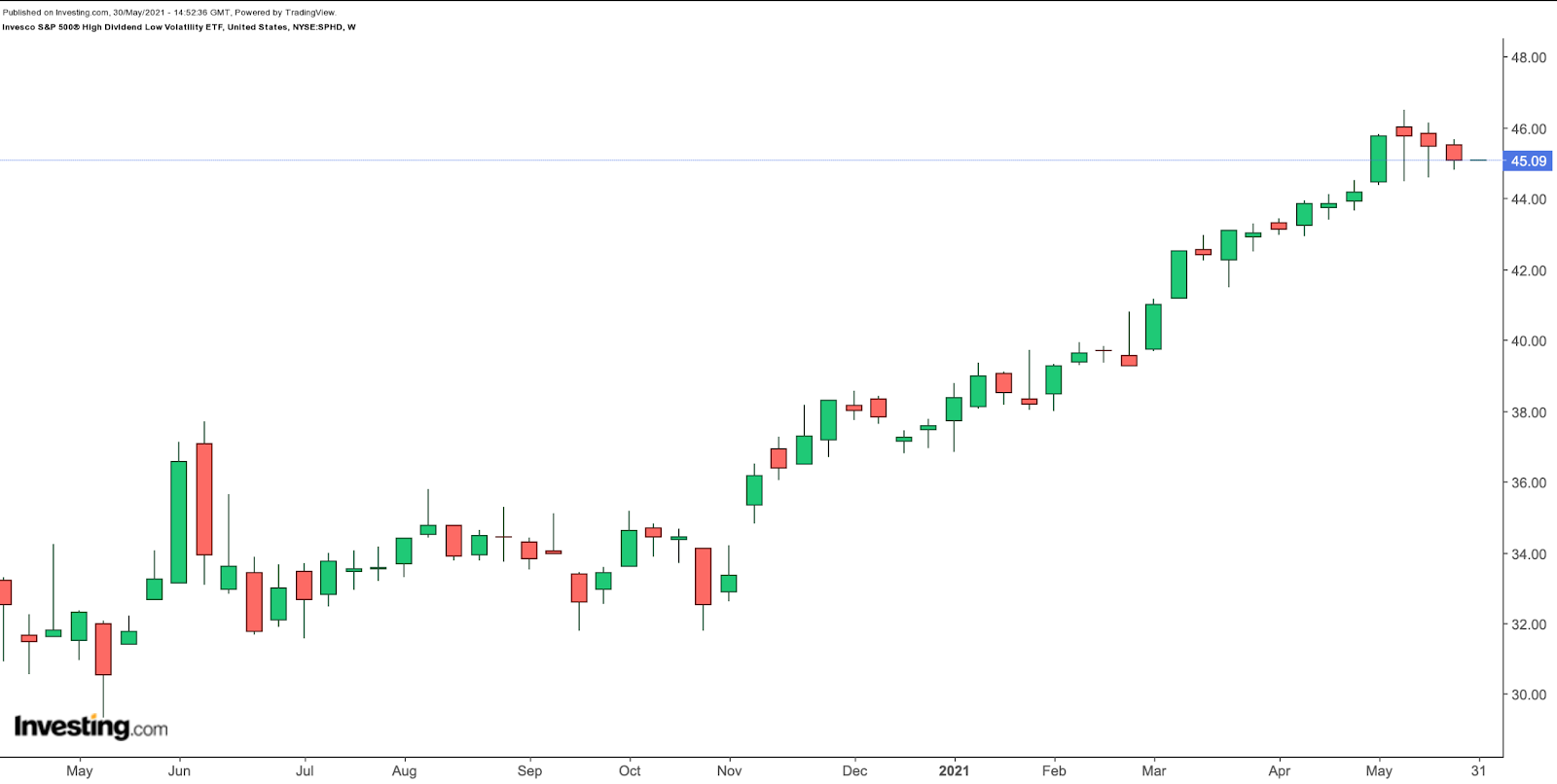In low interest rate environments dividends are important for many long-term investors. Buying dividend stocks and reinvesting them to buy more shares is likely to result in considerable growth in savings. Individuals nearing retirement tend to favor stocks with reliable dividends in their portfolios.
Established blue-chip businesses usually pay out a significant percentage of their earnings as dividends. Such companies tend to have large moats and are resilient in economic downturns.
Investors regard them as defensive names. Thus, Wall Street typically reacts positively to corporate announcements of dividend increases by such dividend payers, which are usually some of the most recognized names in corporate America.
We previously discussed exchange-traded funds (ETFs) with juicy dividend yields (for example, here, here, and here). Today’s article extends the discussion and introduces two additional funds that could be appropriate for those who want to include ETFs with stable and respectable dividends.
1. iShares Core High Dividend ETF
- Current Price: $98.10
- 52-Week Range: $76.23 - $100.48
- Dividend Yield: 3.60%
- Expense Ratio: 0.08% per year
The iShares Core High Dividend ETF (NYSE:HDV) provides exposure to high dividend-paying US equities. Since its inception in March 2021, assets under management have grown to $7.05 billion.
HDV which has 75 holdings, tracks the returns of the Morningstar Dividend Yield Focus Index. In terms of sectors, energy has the highest weighting with 17.98%. Next in line are health care (16.15%) and consumer staples (15.01%).
The top ten names make up around 55% of the fund. In other words, the ETF is top-heavy. Among the leading names are Exxon Mobil (NYSE:XOM), JPMorgan Chase (NYSE:JPM), Johnson & Johnson (NYSE:JNJ), Verizon Communications (NYSE:VZ) and Chevron (NYSE:CVX).
Since the start of the year, the fund is up close to 12% and hit an all-time-high (ATH) in early May. HDV’s current P/E and P/B ratios stand at 23.44 and 3.28, respectively.
Those readers who are looking to invest in high-yield equities should keep the fund on their radar screen. We like many of the names, which have not necessarily participated in some of the speculative rallies of the past year. A potential decline toward $95 or even below would improve the margin of safety of the fund.
2. Invesco S&P 500 High Dividend Low Volatility ETF
- Current Price: $45.09
- 52-Week Range: $31.56 - $46.49
- Dividend Yield: 4.19%
- Expense Ratio: 0.30%
The Invesco S&P 500® High Dividend Low Volatility ETF (NYSE:SPHD) invests in S&P 500 businesses with low volatility that also offer high dividend yields. Lower volatility would ideally mean less downside in the case of broader market declines. However, we should note that in the early weeks of the pandemic in 2020, SPHD was also quite volatile.
SPHD, which tracks the S&P 500 Low Volatility High Dividend Index, has 52 holdings. The fund started trading in October 2012, and net assets stand at $3.14 billion. Utilities currently have the highest weighting (17.92%), followed by consumer staples (15.40%) and information technology, IT, (12.74%).
The top ten names comprise close to 30% of the fund, which is rebalanced semi-annually, in January and July. No stock currently has a weighting of over 3.75%.
Document storage and record management service Iron Mountain (NYSE:IRM), telecommunications carrier Lumen Technologies (NYSE:LUMN), Exxon Mobil, energy infrastructure group Kinder Morgan (NYSE:KMI) and Altria Group (NYSE:MO), one of the largest producers of cigarettes and related products, are among the leading names in the roster.
Year-to-date, SPHD has returned almost 20% and saw a record high on May 10. Given how far the fund has appreciated in recent months, short-term profit-taking could be on the cards. Potential investors would find better value around $42 or below. We like the sectoral diversification as well as the fact that the fund is not top heavy.
